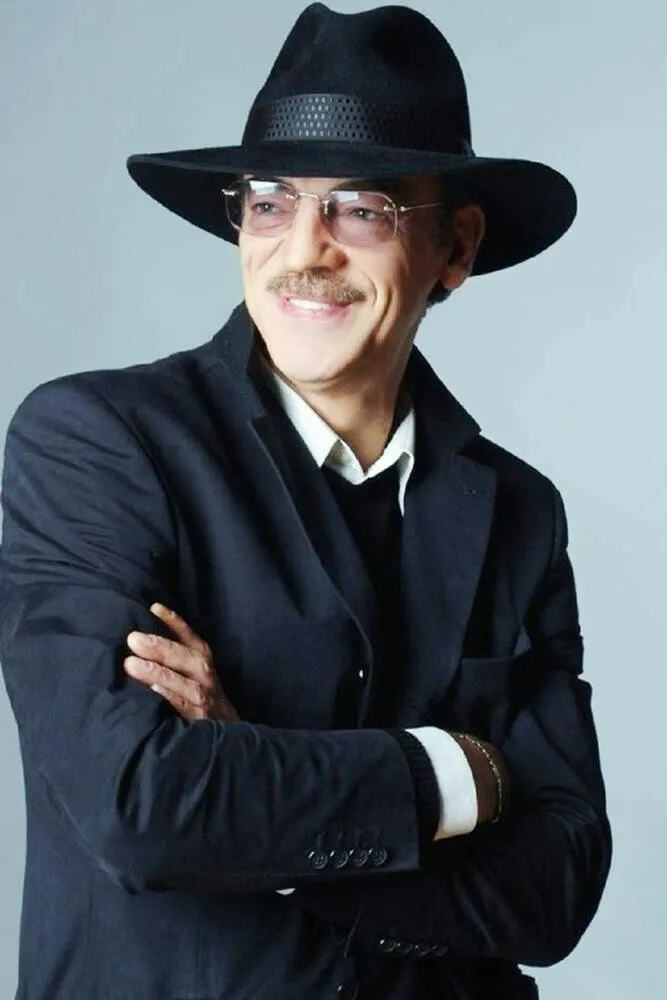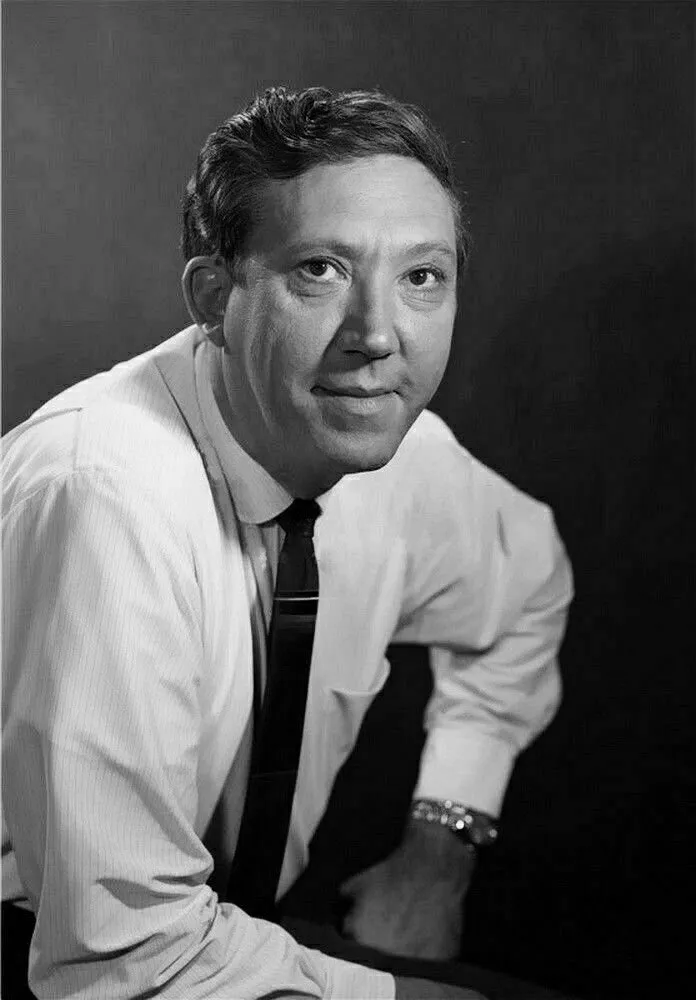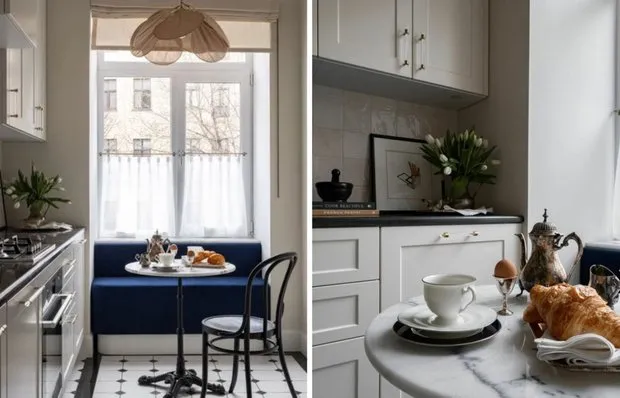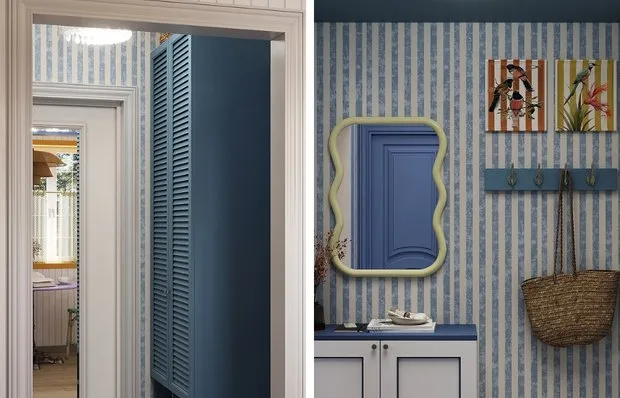There can be your advertisement
300x150
Star Communal Living: How Soviet Celebrities Lived in Shared Apartments
The place where people experienced the strongest emotions together
While modern stars boast of penthouses and mansions, their Soviet predecessors began their path to fame in cramped communal apartments. Mikhail Boyarsky spent his first eight years of life with his family in a 16-square-meter room on Goncharnaya Street, and Georgy Vitsin lived in communal flats all his life — first in Krivokoleny Pereulok, and later in Starokonushennyy Pereulok. Alice Freyndlich grew up in a Leningrad communal flat where neighbors became a second family, and Yuri Nikulin only received his own apartment on Bronnaya Street in the 1970s.
Communal living did not break the future stars — on the contrary, it toughened their character and taught them to appreciate simple joys. These stories show that the path to success does not always begin with luxury — sometimes it is enough to have talent, perseverance, and the ability to find beauty even in the humblest conditions.
Mikhail Boyarsky: From Goncharnaya Street to the Moika Embankment
The family of Boyarsky, hereditary theatrical actors, lived in a communal apartment on Goncharnaya Street, house 17, apartment 21. Five people lived in a 16-square-meter room, heating with a wood-burning stove. Post-war times were especially hard for Leningraders. To survive, the family had to sell parts of grandmother's unique library.
The future king of musketeers recalls this period without bitterness. The family of hereditary intellectuals lived modestly, if not to say poverty-stricken, but the atmosphere was filled with love for art. Parents often took young Mikhail to the Komissarzhevskaya Theater, where they worked. There he watched actors perform with a beating heart.
When Mikhail turned seven, the family moved to a new apartment on Blagodatnaya Street. This was an entirely different world — a working-class district where boys walked around with knives in their pockets, and teenagers robbed newsstands. Boyarsky was protected from this dangerous path by the music school attached to the conservatory and the care of his parents.
 Photo: pinterest.com
Photo: pinterest.comGeorgy Vitsin: Loyalty to Communal Living
Georgy Vitsin lived in communal apartments all his life. His family initially lived in Krivokoleny Pereulok, house 9. Even after becoming a People's Artist of the USSR, Vitsin remained true to a modest lifestyle. In his later years, he gave his large apartment in central Moscow to his daughter Natalya and moved into a 'khrushchyovka' in Starokonushennyy Pereulok.
Many thought Vitsin died in poverty, but it was a conscious choice of the actor. Colleague Natalya Varley explained: 'He was a great artist, but incredibly humble. He loved his wife, daughter, and his dog, and that was enough for Vitsin.' Two-room apartments were all he needed, where he could live with his family.
Stories about Vitsin asking for meat scraps were based in reality — not for himself, but to feed stray dogs and cats. Until the last days of his life, the actor went out daily to feed homeless animals, refusing help from others.
 Photo: pinterest.com
Photo: pinterest.comAlice Freyndlich: A Friendly Communal Family
The communal flat where the future star of 'Service Romance' grew up was established even before the war. After evacuation and the siege, only two families remained from the original residents, and the apartment was occupied by 'newcomers' who quickly became close friends.
Freyndlich recalls those times with warmth: neighbors celebrated holidays together and shared food. In post-war Leningrad, this was especially important — when everyone had little, people supported each other. The communal kitchen became a place where news was discussed, and joys and sorrows were shared.
Today, the famous actress lives on the legendary Rubinstein Street, but her experience in communal living taught her to value human warmth more than square meters.
 Photo: pinterest.com
Photo: pinterest.comYuri Nikulin: The Circus in Communal Living
The family of the Nikulins lived in a communal apartment for many years. Only in the 1970s were they allocated an apartment on Bronnaya Street, where they also settled the mother of Yuri Nikulin and his sister with her family.
The actor's wife, Tatiana Nikolaevna, recalled that her sister, who shared the apartment with them, had two children. For them, Nikulin performed magic tricks and staged fairy tales like 'Little Red Riding Hood'. 'In our house, it was always very cheerful — not because he laughed a lot, but because Yuri Vladimirovich created such a joyful atmosphere around himself when telling jokes or singing — and he loved to sing,' she said.
The communal apartment became the first stage for the future clown, where he refined his skill in entertaining people. Neighboring children were his first grateful audience.
 Photo: pinterest.com
Photo: pinterest.comIosif Kobzon: War and Peace in Communal Living
As a child, Kobzon often moved with his mother, two brothers, and grandmother. Before the war, the family moved to Lviv for evacuation, and was sent to Uzbekistan. Victory Day was celebrated by the future artist in a communal flat in the city of Slavyansk.
Kobzon recalls how through the thin walls of the flat, he could hear the sobs of families who had just lost someone in a funeral, but the loudest cries were joyful exclamations — heard in his flat on the day the war ended. These contrasts — grief and joy, separated only by a thin wall — shaped the emotional depth of the future singer.
 Photo: pinterest.com
Photo: pinterest.comCommunal apartments of wartime were places where people experienced the strongest emotions together. Foreign sorrow became personal, and foreign joy doubled.
Communal apartments were not just places to live — they became a school of life for an entire generation. Here, people learned to share, negotiate, and support each other. Perhaps precisely because of this, Soviet stars who grew up in communal flats were distinguished by a special humanity and the ability to communicate with all kinds of audiences. They knew: a true star shines not only on stage, but in everyday life.
More articles:
 Apartment That Sells in a Week: 5 Tips Real Estate Agents Don't Talk About
Apartment That Sells in a Week: 5 Tips Real Estate Agents Don't Talk About Before and After: How 200 Thousand Rubles on Facades Completely Transformed the Kitchen
Before and After: How 200 Thousand Rubles on Facades Completely Transformed the Kitchen How They Beautifully Designed an 8 m² Kitchen in a Stalin-era Apartment
How They Beautifully Designed an 8 m² Kitchen in a Stalin-era Apartment How We Designed a 7 m² Kitchen to Look Spacious and Reminiscent of a Café in Southern France
How We Designed a 7 m² Kitchen to Look Spacious and Reminiscent of a Café in Southern France Bright Mini Bathroom 2 m² with Vacation Vibe
Bright Mini Bathroom 2 m² with Vacation Vibe House Face: How They Decorated a 2 m² Mini Entryway with Mediterranean Atmosphere
House Face: How They Decorated a 2 m² Mini Entryway with Mediterranean Atmosphere 7 Ideas We Spotted at a 24 m² Mini-Cottage with a Unique Interior
7 Ideas We Spotted at a 24 m² Mini-Cottage with a Unique Interior Island and Accent Display: How We Designed a Cozy Kitchen for Mom
Island and Accent Display: How We Designed a Cozy Kitchen for Mom